Canada’s First Nations people of the far north are viscerally connected to the region’s fish and have been for eons. Even today, many North Country lodges and outfitters hire native guides to run anglers around the thousands upon thousands of boreal lakes, simply because these people know the water, the fish and the environment.
And, chances are, they grew up fishing, and not just for fun. The pike, walleye, grayling, lake trout and whitefish of the north are still vital food sources for families and entire communities. Knowing where they were and how to catch them has always been the difference between enjoying a healthy meal or going hungry.
I’ve had the pleasure of being guided by a handful of native guides over the years, and each time, I learn a lot from these quiet, unassuming people. Men of few words, they will generally put you on fish. But to understand why they pick a certain place, or why they recommend a certain fly or certain depth, you must often cajole them into conversation.
On a recent trip to northern Manitoba, my guides Henry and Bruno, both of the Cree First Nation, made sure my son and I both caught plenty of pike and walleye, even under challenging weather circumstances that made fishing for most of the week we visited really cold and really uncomfortable. Nevertheless, at the end of each day, we both would look back on the time spent fishing with a lot of respect for our guides’ ability to ensure we were successful.
And I was careful to always ask them why we had picked certain spots, particularly for pike, and particularly given the crappy weather we had the first five days of an eight-day adventure. Here are some tips for going after Northwoods pike from the people who have chased these fish since they were old enough to bait a hook.
Where and why
Like any fly fishing excursion, the ultimate variable will be the weather. And we had it all at Laurie River Lodge the first week of June. From bright sun and t-shirt weather to sideways snow squalls that penetrated every layer with which we could arm ourselves, we experienced a fairly typical late spring along the Precambrian Shield.
And, of course, the weather dictated where we fished and why. With temperatures in the 30s and low 40s, McGavock Lake’s pike were hanging in deeper water off of points, shoals and drop-offs, waiting patiently for the weather to turn. This, according to our guide, Henry, is because water about eight to 10 feet deep is the warmest in the lake, and pike are waiting for warmer weather before migrating up into shallow bays and shoreline weed beds to spawn.
But they’re still hungry. McGavock Lake can lie under ice for eight months of the year, and while pike still eat, it’s a slow bite (just ask any ice fisher how sluggish they can be in the dead of winter). This time of year, pike eat readily, making up for lost time. And, like any predator fish, they follow their food. In McGavock Lake, pike food consists of every other fish in the lake, and, sometimes, even other pike. The lake’s famed walleye tend to congregate off of shoals and drop-offs early in the season, following schools of minnows, and the pike will gather there, too.
This time of year, according to Henry, the search for pike is all about the search for warmer water. So, where reefs and drop-offs were in short supply, deeper weed beds made good targets for hungry pike. This time of year, the lily pads are only starting to grow, and the grasses and weeds of the bays are still mostly dormant. Last year’s dead weeds are busy decaying, and that decay produces heat. On a 40-degree day, I caught pike on poppers and gurglers over a three-foot-deep weed bed. To say I was surprised is an understatement.
When the weather finally did warm up for us, our fishing success improved, too. We went from maybe a few dozen fish a day to—and I’m not kidding—a couple of hundred fish a day. The pike, encouraged by warmer weather, moved up into shallow bays where the skinnier water (sometimes only a foot or two deep) warms quickly. With warmer water, the fish’s metabolism got a jolt, and their natural aggression kicked in.
What to cast
When I tie pike flies, I tend to stick to four simple colors— red, white, yellow/chartreuse and black—and I tend to go big. But bigger, I’ve learned over the years, isn’t always better. If I fished with Henry every day of the summer, he’d have me use nothing but red, red-and-white, yellow and red-and-yellow streamers about four inches long. But even he breaks his own rules now and then, and he’ll recommend a small black streamer.
In addition to being home to a really toothy food chain, the lakes of the north host a hearty population of leeches. Nearly every pike and walleye we reeled in over the course of eight days had at least a few leeches attached. And why not match the hatch?
A couple of years back, the biggest pike I’ve ever caught (45 and a half inches) came to the boat after hitting a size 10 black Woolly Bugger. Leeches are a ready food base for pike, particularly when the fish are laying up over shallow-water, mud-bottomed bays.
But ‘Buggers aren’t the answer all the time. Pike are sight predators, and they are the ultimate opportunists. Consider long streamers tied with a mix of rabbit fur and maribou, with long saddle hackle feathers tied for action. Be generous with the flash and tie the same pattern in multiple weights. When pike are deeper, a tungsten bead-head fly will get down deep enough to tempt hungry fish. When they’re in the shallows, the same fly tied with no weight will ride just under the surface and draw slashing attacks from angry pike.
But my favorite kind of fishing for pike is with poppers and gurglers—erratic and noisey, these flies push water, behave like injured baitfish and, when pike are shallow, they draw the most impressive takes in the freshwater fly fishing arena. This last trip, I experimented with the new Orvis Dragontails tied on a size 2 short-shanked hook behind two layers of red or chartreuse foam, and I’ll definitely tie that pattern again. There is nothing quite like watching a 40-inch pike erupt under your gurgler on the third strip, breaking the silence of a finger bay with a mighty plunge.
It’ll make you giggle like a little kid again.
Timing
This is completely up to you, but when you fish for pike in the north will determine the kind of fishing you’ll have. I like to fish the boreal lakes either early or late. Early season pike fishing is a crap-shoot with the weather, but as the days get longer toward the summer solstice, the fishing gets better. Through June and into early July, the pike will find shallow water when they can.
Once it gets hot—and it does get hot in the North Woods—the pike will move deeper. Henry tells me they might poke onto the bays early in the morning or late in the evening, but you’ll do most of your damage searching for pike around reefs and dropoffs … or where the walleye gather in search of cooler water, like river inlets or spring seeps. This is the game through July and into late August.
And then, as things start to cool off a bit, the pike return to the shallows just in time to welcome autumn to the North Country. But now, the weed beds are all grown up and access to bays and backwaters can be tricky. This is when you fish the edges of lily pads and weeds, tight to rocky banks and over shallow reefs.
Honestly, it’s never a bad time to fish for pike in the North. They are an underappreciated fly rod fish, and if you can cast a good 40 feet with a breeze at your back, you can catch pike. Big pike.
And, if you’re lucky, you’ll have a Cree guide there to put you on fish. It’s almost as if their lives depend on it.




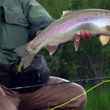
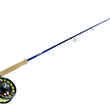
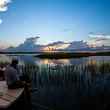





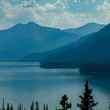



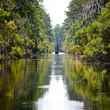
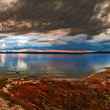



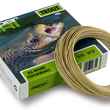
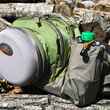



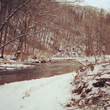
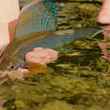



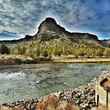
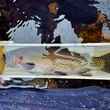
Comments
Mike McAllister replied on Permalink
Thank you a very well written article. I love fly fishing and this is on my list next year to do. Any recommendations of lodges or guides? I will be with my 13 year old son.
Pages